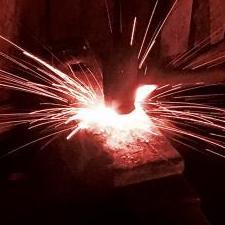-
Posts
1,193 -
Joined
-
Last visited

C-1ToolSteel replied to igrindwell's topic in Anvils, Swage Blocks, and Mandrels

C-1ToolSteel replied to Brian Evans's topic in Anvils, Swage Blocks, and Mandrels

C-1ToolSteel replied to Brian Evans's topic in Anvils, Swage Blocks, and Mandrels

C-1ToolSteel replied to Jonathan Smidt's topic in Heat Treating Knives, Blades etc
Tagged with:

C-1ToolSteel replied to NWIO's topic in Anvils, Swage Blocks, and Mandrels

C-1ToolSteel replied to RuckSack's topic in Anvils, Swage Blocks, and Mandrels

C-1ToolSteel replied to Jclonts82's topic in Knife Making

C-1ToolSteel replied to Donniev's topic in Blacksmithing, General Discussion

C-1ToolSteel replied to Donniev's topic in Blacksmithing, General Discussion

C-1ToolSteel replied to Donniev's topic in Blacksmithing, General Discussion
